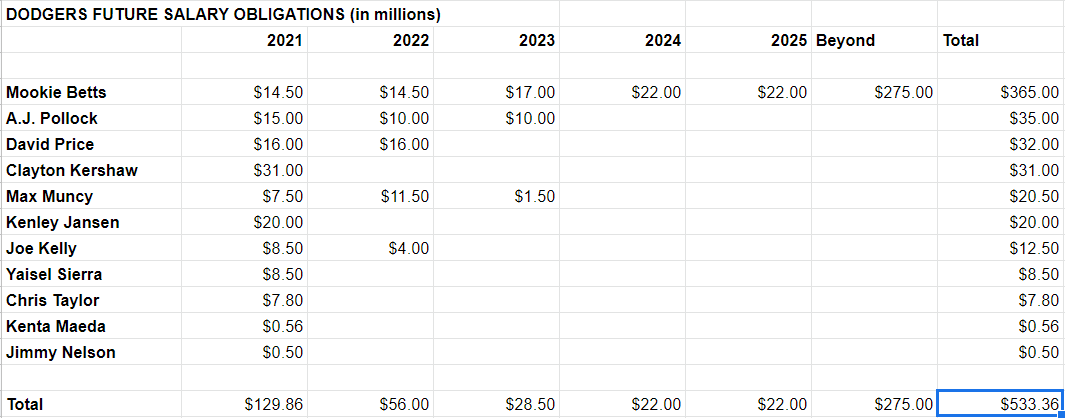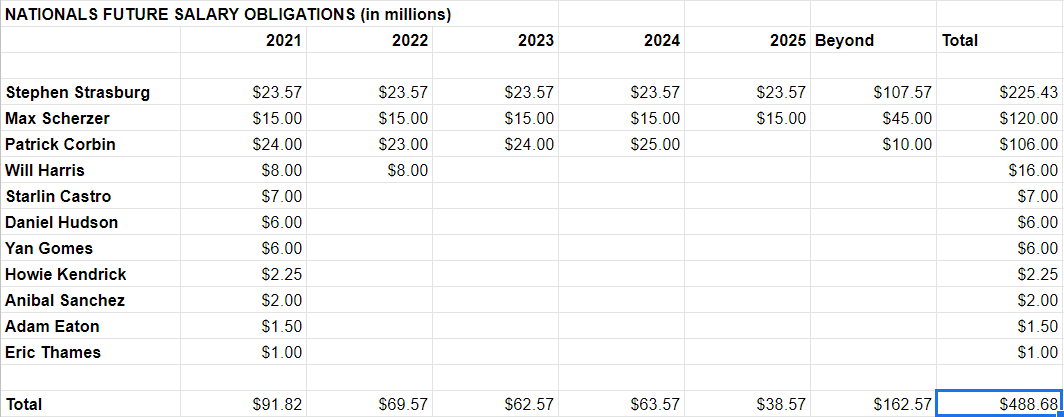Looking at long-range payroll commitments, there’s a fairly sizable gap between the top-five spenders and the number six club (the Padres, at a total of $396MM). Here’s that top-five:
| Rank | Team | Total |
| 1 | Angels | $651.00 |
| 2 | Yankees | $612.00 |
| 3 | Dodgers | $533.36 |
| 4 | Nationals | $488.68 |
| 5 | Phillies | $488.50 |
That list isn’t remotely surprising. Some other deep-pocketed teams have pared back or simply not yet agreed to blockbuster extensions with existing stars. The handful of teams listed above have each recently agreed to monster contracts with one or more superstars.
Looking at a team’s future outlook involves quite a bit more than its contractual commitments. We’d want to consider controllable young talent, the prospect pool, and a wide variety of business factors in assessing which organization is best-situated for the long haul.
Here, though, we’ll just focus on the deals that are already locked in. First, I’ll re-list each of those five teams’ eexisting commitments. Then, you will vote for the one that you’d most prefer to have were you operating a large-budget franchise. (Click on the links to expand the image.)
The Angels feature two mid-prime superstars, including the greatest player of this generation.
The Yankees have an ace, a former MVP who could still return to his former glory, and a group of quality players.
The Dodgers had only limited future commitments until they struck a bold deal to keep one of the game’s best players.
The Nationals are all-in on high-grade rotation pieces.
The Phillies spent big to pluck high-end talent from division rivals.
Which is the best slate of contract commitments? (Poll link for app users; response order randomized.)





